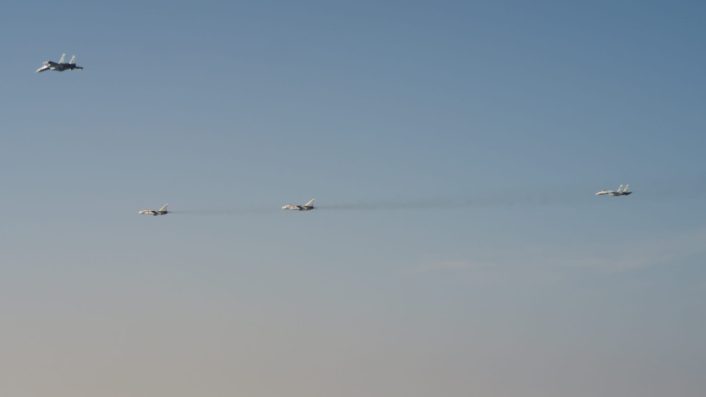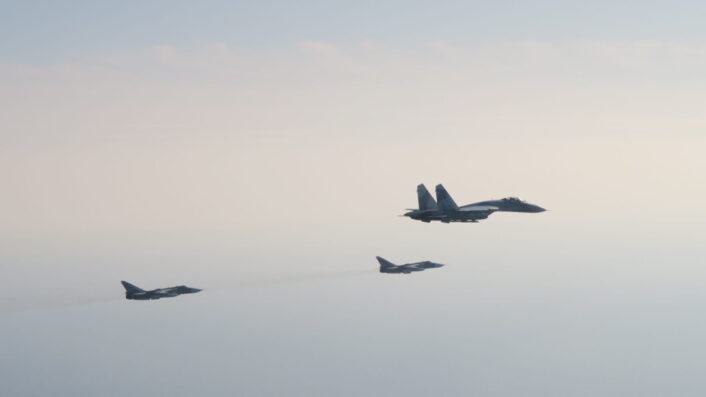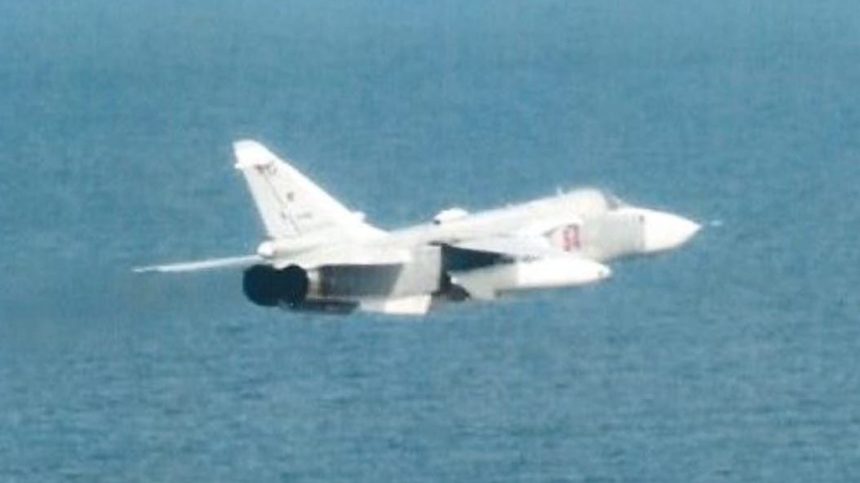The Russian Su-24 Fencer was intercepted by Swedish JAS-39 Gripen aircraft.
On Jun. 14, 2024, a Russian Su-24 aircraft violated Swedish airspace east of the southern tip of Gotland.
Gotland, the largest island in Sweden, is strategically located in the Baltic Sea about 90 kilometers (56 miles) east of the Swedish mainland, roughly 300 kilometers (about 186 miles) from Kaliningrad exclave and approximately 600 kilometers (about 370 miles) from mainland Russia.
According to the Swedish Armed Forces, despite receiving radio warnings from the Swedish air combat command, the Russian aircraft did not alter its course. Consequently, a Swedish JAS-39 Gripen jet was scrambled to escort the intruding aircraft out of Swedish airspace.
Air Force Chief Jonas Wikman expressed strong disapproval of the incursion, stating, “The Russian action is not acceptable and shows a lack of respect for our territorial integrity. We followed the entire process and were there to intervene.” The breach was brief, but its implications were significant.
The Swedish Air Force released an image of the intercepted aircraft: the Su-24 appears to be an MR variant, bort number “54 red”, the same aircraft the German Air Force Eurofighters supporting NATO’s Air Policing mission at Lielvarde Air Base, Latvia, intercepted on Jun. 1, 2024.
Für unsere 🇩🇪 #Eurofighter der @NATO-Mission #VAPB in 🇱🇻startete der Samstagmorgen mit einem #AlphaScramble. Über der baltischen See wurde eine 🇷🇺SU-24 FENCER ohne Flugplan und Funk identifiziert.#WeAreNATO #StrongerTogether pic.twitter.com/dlO3wjuzX1
— Team Luftwaffe (@Team_Luftwaffe) June 1, 2024
The Su-24MR is a specialized reconnaissance aircraft derived from the Su-24 attack aircraft, equipped with a variety of sensors and systems designed for intelligence-gathering missions including a Side-Looking Airborne Radar (SLAR) for mapping and surveillance of large areas, IR and Optical cameras for high-rez imagery for identifying targets as well as ELINT systems.
Not the first time
The airspace violation is not the first one, but the first since Sweden joined NATO.
On Mar. 2, 2022, there were similar violations when two Russian Su-27s and two Su-24s entered Swedish airspace, once again over Gotland. JAS 39 Gripen. In that case too, the Swedish Armed Forces released some interesting images of the Russian package involved in the intrusion.


Navigation mistake or deliberate violation?
While short-lived, the violation on Jun. 14, 2024, is obviously quite concerning for Stockholm.
Foreign Minister Tobias Billström (M) told the Swedish SVT outlet on Saturday that they will summon the Russian ambassador:
“The Russian behavior is unacceptable. The Ministry of Foreign Affairs will call the Russian Embassy to mark the incident. We are in close contact with allies and partners about events in the immediate area.”
On Friday Swedish Air Force intercepted a Russian military air craft violating Swedish air space east of Gotland.
– The Russian act is unacceptable and shows a lack of respect for our territorial integrity, says commander of the Swedish air force, Jonas Wikman. #swaf #wearenato pic.twitter.com/OP67FPSYBG
— Försvarsmakten (@Forsvarsmakten) June 15, 2024
The violation can have two explanations: it was either a pilot error or deliberate, with the latter being more likely. It could be a way to “intimidate” Sweden following its NATO membership or just an attempt to test the readiness of the Swedish Air Force’s QRA (Quick Reaction Alert) while collecting some crucial intelligence about the enemy; common practice between Russia (previously Soviet Union) and NATO allies for decades since the Cold War.









